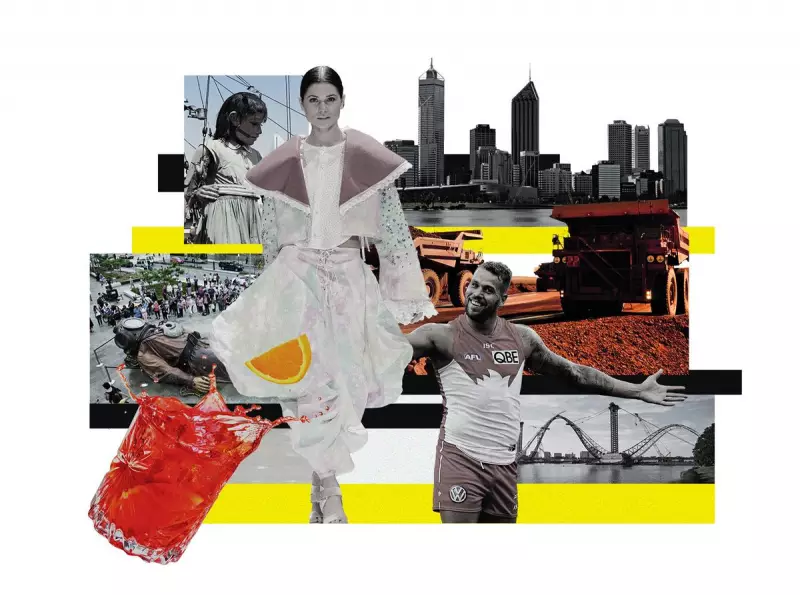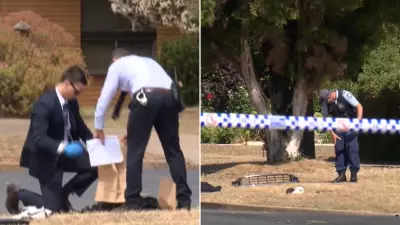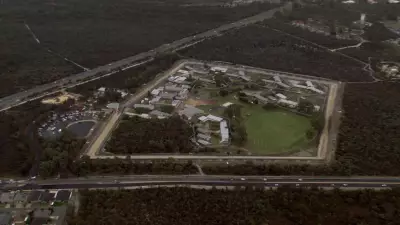
Western Australia has always been defined by its sheer scale - a vast state larger than most countries, boasting everything from cool karri forests to storm-pounded limestone coasts and breathtaking red pindan. But over the past two decades, another kind of bigness has emerged: monumental growth, ambitious projects, and transformative cultural development that have reshaped the state.
The Economic Engine Room
The story of modern Western Australia is inextricably linked to resources. When STM launched in 2004, iron ore generated $6.19 billion in exports, representing just 18% of WA's total. Fast forward to 2024, and that figure has exploded to $128.13 billion, accounting for 55% of exports.
China's appetite for WA resources fundamentally transformed the state's economic landscape. In 2004, China took only 14.3% of WA's exports; by 2023, this had surged to nearly 53%. This trading relationship underpinned what former premier Colin Barnett describes as the modern equivalent of the 1890s gold rush that first put WA on the map.
Barnett, who served as premier from 2008 to 2017, consciously shifted focus toward development, overseeing landmark projects including the Wheatstone and Gorgon gas projects in the northwest and the second stage of the Ord River irrigation scheme. The resources boom filled both public and private coffers, enabling massive infrastructure spending that would reshape Perth and regional WA.
Building a Modern Metropolis
The mining boom's financial windfall translated into concrete and steel across Perth. After decades of debate about connecting the CBD with the Swan River, Barnett spearheaded Elizabeth Quay, a waterfront precinct that opened in 2016 after four years of construction.
The city's healthcare infrastructure received major upgrades with Fiona Stanley Hospital opening in 2014 as Perth's first new tertiary public hospital in 50 years, followed by a new children's hospital in 2018 to replace the ageing Princess Margaret facility.
Perhaps the most beloved project among sports fans was Optus Stadium, which opened in January 2018 to replace Subiaco Oval. The stadium's significance was underscored when it hosted the 2021 AFL Grand Final after COVID-19 lockdowns made Melbourne's MCG unavailable.
The pandemic response under Premier Mark McGowan saw WA become "an island within an island" with strict border controls and quarantine measures that allowed relative freedom while keeping the resources sector productive. McGowan's government continued its signature Metronet rail project, with the final line opening recently to create an 80km train route from Byford to Yanchep.
Cultural Renaissance and Urban Challenges
Perth's transformation extended beyond infrastructure to address its cultural identity. In 2000, the city was infamously dubbed "Dullsville" by Lonely Planet, but the subsequent years witnessed a remarkable cultural awakening.
The introduction of small bar laws in 2007 revolutionized Perth's drinking culture, with pioneering establishments like 1907, Ezra Pound, and Helvetica paving the way for today's vibrant laneway scene. Further liberalization in 2017 allowed drinking without ordering food at small and medium restaurants.
Major cultural venues emerged, including the State Theatre Centre with its Heath Ledger Theatre opening in 2011, and the $550 million Perth Arena (now RAC Arena) in 2012, which has hosted international superstars from Elton John to Beyoncé.
The crowning achievement came with the $400 million WA Museum Boola Bardip opening in 2020 after a decade-long mission under CEO Alec Coles. The museum became part of Northbridge's transformation into a cultural hub alongside the Art Gallery of WA and State Library.
The cultural pinnacle was arguably The Incredible and Phenomenal Journey of The Giants in 2015, where two massive marionettes attracted approximately one million people to Perth's streets over two days.
Population Growth and Housing Pressures
WA's economic success drove unprecedented population growth. Historian Jenny Gregory notes that during STM's publishing history, WA became Australia's fastest-growing state, expanding from 1.9 million people in 2004 to 3 million in 2024.
This growth transformed Perth's geography. In 2004, Benenden Avenue in Butler marked Perth's northern frontier; today the city stretches 20km further to Two Rocks and south to Mandurah. The FIFO (fly-in-fly-out) workforce became entrenched in WA vocabulary as workers flocked for mining opportunities.
However, rapid growth brought challenges. Gregory points to skyrocketing housing prices that turned the Australian dream into a nightmare for many. The median house price in Perth jumped from $250,000 to $810,000 over 21 years, creating a severe housing crisis.
REIWA president Suzanne Brown notes a recent shift toward smaller homes, with units, townhouses and villas outperforming established homes in price growth - suggesting Perth might finally be moving away from the traditional quarter-acre block dream.
Throughout these transformations, Western Australia has maintained that characteristic audacity - from the gold rush pipeline ambitions of the 1890s to today's massive resource projects and cultural landmarks. The state's bigness remains not just geographical, but aspirational.





